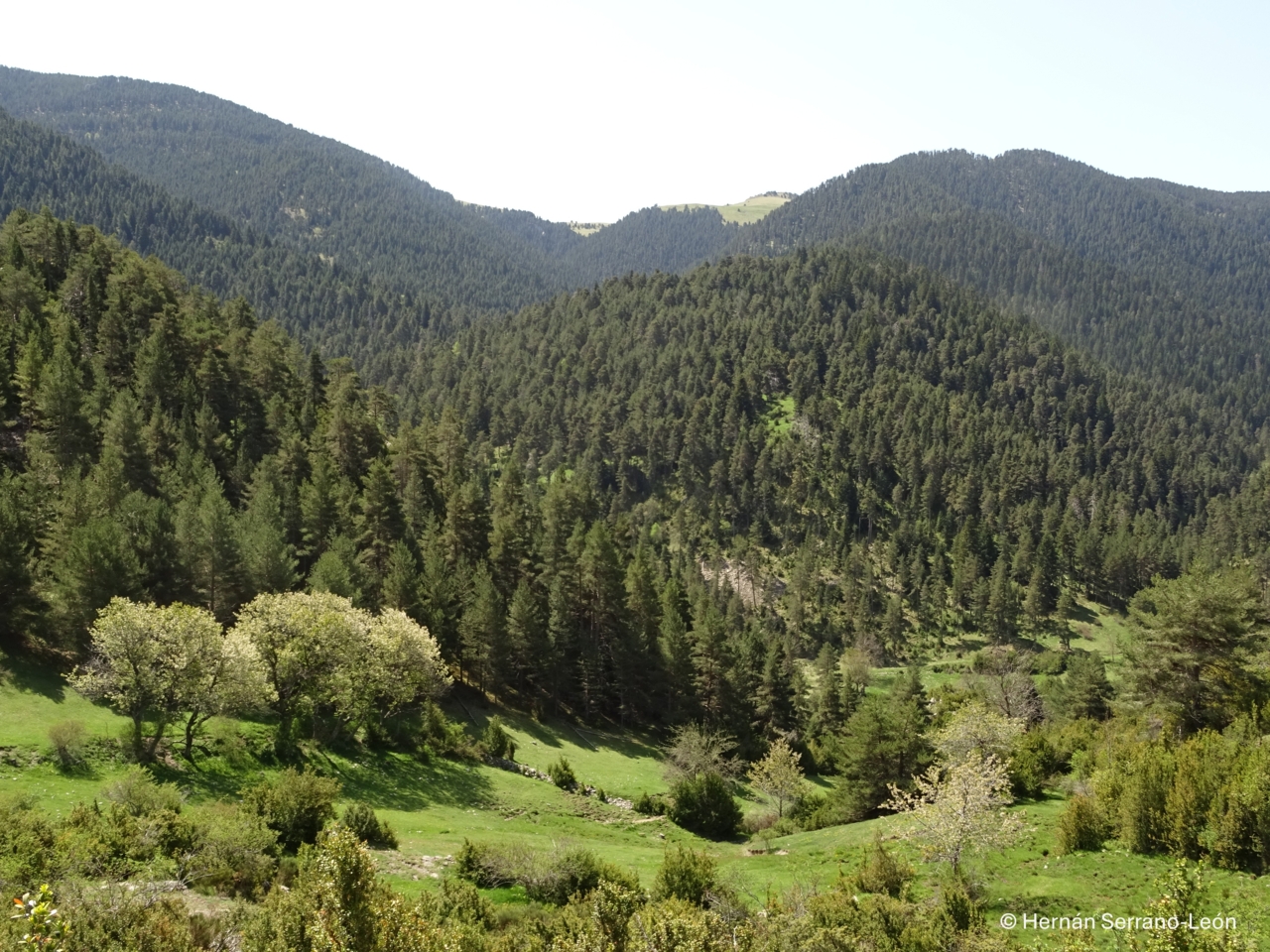Best Practice Knowledge Base
6.1 Enhancing landscape diversity

Landscape heterogeneity in Solsona, Spain © Hernán Serrano-León
Landscape structural and compositional diversity accommodate species with different ecological requirements, while promoting long-term stability by allowing nutrient and population fluxes between different ecosystem types or successional stages. Effective conservation strategies should prioritize mosaics of forest types, protect natural disturbance regimes, and integrate spatial planning to sustain biodiversity across landscapes.
I. Guidelines
| Nº | Title | Author | Year | Focus Region | Language | Summary | Link |
| 1 | Achieving diversity in Scotland's forest landscapes | Forestry Commission | 2012 | UK | English | Detailed recommendations for improving diversity of forest landscapes | https://cdn.forestresearch.gov.uk/2012/03/fcpg103.pdf |
II. Books or book chapters
| Nº | Title | Author | Chapter | Chapter author | Year | Focus region | Language | Summary | Link |
| 1 | Landscape Planning with Ecosystem Services | Von Haaren et al. | Measures for landscape aesthetics and recreational quality | Albert et al. | 2019 | World | English | Describes methods for improving landscape aesthetics through heterogeneity enhancement, among others | https://link.springer.com/book/10.1007/978-94-024-1681-7 |
| 2 | Principles and methods in landscape ecology | Farina | Emerging patterns in the landscape | - | 2006 | World | English | Describes the relevance of considering landscape heterogenity in ecological restoration, and the different aspects to consider | https://link.springer.com/book/10.1007/1-4020-3329-X |
| 3 | Ecosystem Function in Heterogeneous Landscapes | Turner and Weathers | Heterogeneity and ecosystem function: Enhancing ecological understanding and applications | Meyer | 2005 | World | English | On the benefits of higher spatial heterogeneity in landscapes, and how it may influence ecosystem function | https://link.springer.com/book/10.1007/b104357 |
| 4 | Ecosystem Function in Heterogeneous Landscapes | Turner and Weathers | The roles of spatial heterogeneity and ecological processes in conservation planning | Possingham et al. | 2005 | World | English | Importance of spatial heterogeneity for biological conservation in the design of nature reserves | https://link.springer.com/book/10.1007/b104357 |
III. Scientific articles
| Nº | Title | Author | Year | Focus region | Language | Type | Summary | Link |
| 1 | Landscape heterogeneity, connectivity, and critical landscapes for conservation | Melanson and Cramer | 1999 | World | English | Conceptual review | Examines how landscape heterogeneity impacts connectivity and function, focusing on species movement and fragmentation in Mediterranean ecosystems | https://onlinelibrary.wiley.com/doi/full/10.1046/j.1472-4642.1999.00035.x |
| 2 | Heterogeneous landscapes promote population stability | Oliver et al. | 2010 | UK | English | Observational study | Effects of landscape heterogeneity on the stability of butterfly populations | https://onlinelibrary.wiley.com/doi/full/10.1111/j.1461-0248.2010.01441.x |
| 3 | Habitat heterogeneity as a key to high conservation value in forest-grassland mosaics | Lászlo et al. | 2018 | Hungary | English | Observational study | Effects of landscape heterogeneity on taxonomic diversity and species composition, among others | https://www.sciencedirect.com/science/article/pii/S0006320718302106 |

